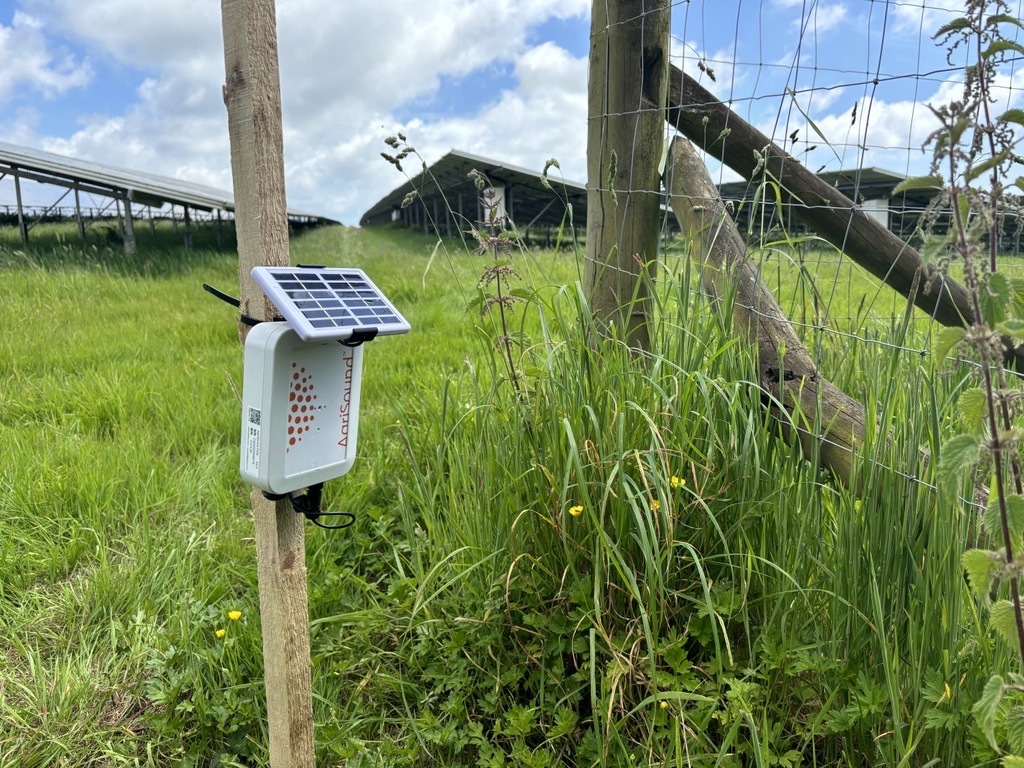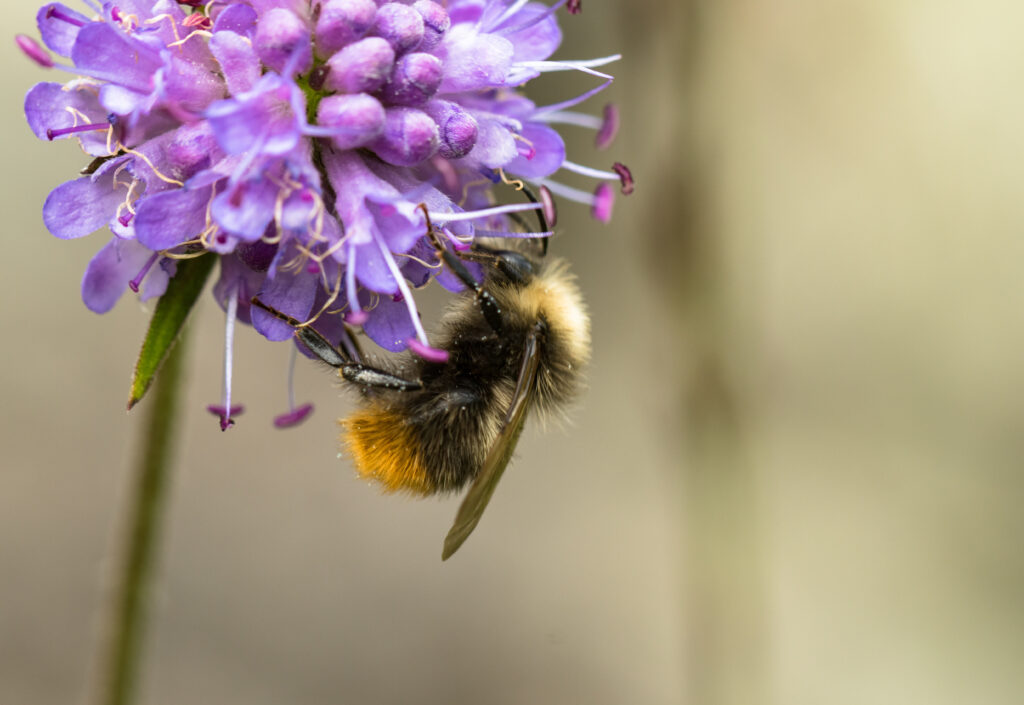How new technology may help to measure our impact on pollinators
Earlier this year, our Old Stone, Romsey and Willows solar farm sites underwent additional habitat works, above and beyond those required by the Landscape and Ecological Management Plan (or LEMP) – the planning conditions set out by local authorities to ensure a site’s long-term ecological maintenance.
In line with our commitment to support and enhance nature across our portfolio, our biodiversity team installed pollinator monitoring technology on all three sites. To do this, the team utilised a technology developed by Yorkshire-based company AgriSound.
Known as a ‘Polly’, these devices are powered by solar energy and have been designed to monitor and record the number of pollinator visitors to a site, utilising a cross-disciplinary science called bioacoustics. Operating 24/7, these devices detect the specific frequencies of visiting insects, contextualised within broader environmental parameters such as light, temperature and humidity. The resulting data presents an in-depth picture of a site’s pollinator activity and, crucially, allows for accurate, real-time reporting and analysis.
For our purposes, we are using the Pollys to understand the impact of the wildflower areas which were added to each site previously, and whether these have had a material impact on pollinators, such as bees and butterflies, visiting our sites.

While not a new technology, these devices have typically been more commonplace within the commercial sector, with companies such as Tesco, Marks and Spencer and Innocent among AgriSound’s clientele. According to the Food and Agriculture Organization of the United Nations, pollinators are thought to contribute to the production of 75% of global food crops, making them a vital part of the value chain. AgriSound’s technology has allowed farmers to better understand how pollinators interact with their sites, which in turn may have positive impacts on their expected harvest and site management. Additionally, these devices can provide vital data for Biodiversity and ESG reporting and help inform our future efforts in these areas.
Although pollinator monitoring forms part of the standard approach to biodiversity monitoring, current methods, such as surveying pollinator numbers across a set area by eye, suffer from significant limitations and often do not yield accurate results. This is why we are trialling this new technology, to improve how we measure the impact of introducing more wildflowers to our sites. By placing devices in different areas of the solar farm – some in grassland areas of the array and others in the wildflower areas that we have introduced – we are creating a comparison to see how pollinators are affected. This will help us better understand the benefits of adding wildflowers to our sites in supporting biodiversity.
We are targeting the end of Summer 2025 as our initial evaluation point. By then, our wildflower areas will have enjoyed two full growing seasons to have established themselves and the data retrieved from should provide a more complete review of pollinator activity on site.

In particular, we will be interested to understand the impact of wildflower on our native bee species, several of which have been in severe decline in recent years. The health of bee populations is regarded as a bellwether for broader biodiversity metrics and is often indicative of broader trends in an area. For example, information from the Bumblebee Conservation Trust suggests that there is, at present, twenty-four species of bumblebee in the UK. In the last century, two species have become extinct and a further eight are now listed as a conservation priority, due to dwindling numbers. Habitat loss is thought to be one of the main causes of this trend, with the UK having lost 97% of its wildflower meadows over the past 100 years, according to the Trust. Using the device’s bioacoustic algorithms, we will now be able to determine the numbers of bees which have frequented our sites and target our approach toward the conservation of native and solitary species.
Additionally, we may be able to use this information to expand our use of wildflower on site and inform species mixes. For example, at our Old Stone solar farm, our wildflower areas contain a species called ‘Devil’s-bit scabious’, which is typically found in heathland areas and is known to attract pollinators. Should our data be reflective of this, it will inform the use of the species within our wildflower mixes on other sites of similar terrain.

As with all matters related to ESG and biodiversity, data and transparency is crucial, and we recognise the importance of being able to demonstrate the impacts of our efforts to our investors. After all, the benefits of biodiversity measures are not limited to insects alone.
Biodiversity policies can be crucial for investors looking to preserve natural resources such as soil, water, and air, which are essential for supporting human life. In addition to the environmental benefits, there are tangible advantages as well. For instance, implementing biodiversity measures can directly improve the quality of land, especially in brownfield or decommissioned areas where the soil is often subpar. Enhancing the soil quality through biodiversity initiatives can make the land more attractive to potential agricultural buyers. Ultimately, the overall quality of a site influences its perceived value and the price it can command when sold. Therefore, while biodiversity efforts primarily focus on environmental impacts, they also serve to enhance asset value for investors.
But as the late writer Christopher Hitchens once said, “What can be asserted without evidence can be dismissed without evidence”. With that sentiment in mind, we welcome the development of AgriSound’s ‘Polly’ technology, and others like it, and look forward to better understanding our site’s impact on pollinators in the weeks and months ahead.
DISCLAIMER
This article has been produced by Bluefield Partners LLP, authorized and regulated by the Financial Conduct Authority with firm reference number 507508.


